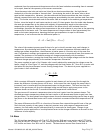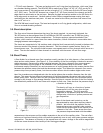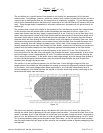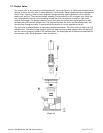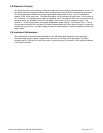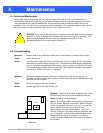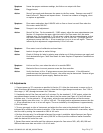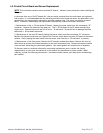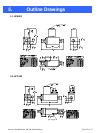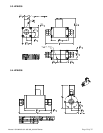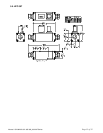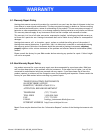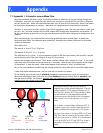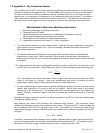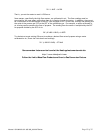
Manual: 152-082010 301-305-306_303-307 Series Page 34 of 35
7.2. Appendix 2 - Gas Conversion Factors
Gas conversion factors (GCF’s) for gasses metered using Hastings Instruments products, can be found by
visiting the Hastings Instruments web site. The web address can be found at the end of this document.
The gas conversion factors (GCF's) provided by Hastings Instruments (HI) fall into five basic accuracy
domains that, to a large extent, are dependent on the method by which they are found. The following
table summarizes the different methods used to determine the GCF's. The table lists the methods in
decreasing order of the degree of accuracy that may be achieved when applying a conversion factor.
1.
The most accurate method is by direct measurement. Gases that can be handled safely, inert gases,
gases common in the atmosphere, etc., can be run through a standard flow meter and the GCF
determined empirically.
2. The National Institute of Standards and Technology (NIST) maintains tables of thermodynamic
properties of certain fluids. Using these tables, one may look up the necessary thermophysical
property and calculate the GCF with the same degree of accuracy as going directly to the referenced
investigator.
3 & 4. Many gases that have been investigated sufficiently by other researchers, can have their molar
specific heat (C'p) calculated. The gas conversion factor is then calculated using the following ratio.
'
'
2
pGasX
pN
C
C
GCF =
GCF's calculated in this manner have been found to agree with the empirically determined GCF's
within a few tenths of a percent. Data from investigations that factor in pressure as well as
temperature, usually supply a higher degree of accuracy in their predictions.
5. For rare, expensive gases or gases requiring special handling due to safety concerns, one may look up
specific heat properties in a variety of texts on the subject. Usually, data found in this manner
applies only in the ideal gas case. This method yields GCF's for ideal gases but as the complexity of
the gas increases, its behavior departs from that of an ideal gas. Hence the inaccuracy of the GCF
increases.
Hastings Instruments continually searches for better estimates of the GCF's of the more complex gases
and regularly updates the list.
Most Hastings flow meters and controllers are calibrated using nitrogen. The conversion factors
published by Hastings are meant to be applied to these meters. To apply the GCF's, simply multiply the
gas flow reading and the GCF for the process gas in use. For example, to calculate the actual flow of
argon passing through a nitrogen-calibrated meter that reads 20 sccm, multiply the reading and the GCF
for argon.
20 x 1.4047 = 28.094
Conversely, to determine what reading to set a nitrogen-calibrated meter in order to get a desired flow
rate of a process gas other than nitrogen, you divide the desired rate by the GCF. For example, to get a
desired flow of 20 sccm of argon flowing through the meter, divide 20 sccm by 1.4047.
Methods Used to Determine Gas Conversion Factors
1. Determined empirically at Hastings Instruments
2. Calculated From NIST tables
3. Calculated using the virial coefficients of independent investigators' empirical
data using both temperature and pressure as variables.
4. Calculated from virial coefficients using temperature only.
5. Calculated from specific heat data at 0 C and 1 atmosphere



